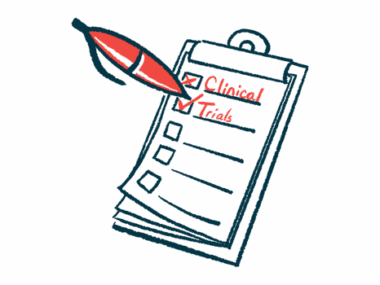3 Ways to Make Early Intervention a Great Experience
Written by |

Sabrina L. Johnson
Early intervention efforts for my 11-year-old daughter, Juliana, who has Angelman syndrome, were not greeted warmly in my house. I can admit that now. These early intervention services included in-home therapy and pre-K programs for babies and toddlers with special needs.
The fact that I didn’t previously understand the process and the need for early intervention led to much of my angst years ago.
Hello, and your name is?
As an introvert, it’s difficult to imagine a slew of strangers entering your house every week. Initially, I struggled to wrap my head around which person went with what therapy.
I also felt the need to do a big cleanup every time we were scheduled for therapy. This was exhausting. So, over time, I accepted that my house didn’t need to sparkle or pass the dust test for Juliana to have therapy at home.
We adopted Juliana through Georgia’s state adoption program. Thus, the transition into the state’s early intervention program, Babies Can’t Wait, happened seamlessly. However, as a new mom, it was a lot to take in and get accustomed to.
Steps to easy navigation
During summer cleaning a few days ago, I came across some old files and pre-K artwork. This prompted a trip down memory lane and made me think about advice I would give to parents who are new to an early intervention program.

A small stack of papers and artwork from 2011 prompts good memories of Juliana’s early intervention experience. (Photo by Sabrina L. Johnson)
Three things stand out to me as important actions for navigating the early intervention process:
1. Reading as much as possible
In addition to medical appointments, lots of paperwork was flying my way when Juliana was younger. Although Juliana is now older, I still thoroughly read information about her improvements and therapies. Taking the time to read the documents helped me to better understand the therapy she would receive. It was a good habit to develop.
I read the entire transition booklet when it was time for Juliana to enter early intervention pre-K. Reading this information clarified testing and placement, and what we could expect during her first days of preschool.
2. Jotting down notes
Whenever there was a visit to our house, I would have a notebook and pen ready. There always seemed to be something to keep in mind or track.
Instead of trying to absorb bits of information as they were passed along, it made more sense to write things in my own words.
Writing it down also allowed me to go back to plan out the best actions for the recommendations.
3. Asking lots of questions
The trained therapists who provide early intervention services are professionals who do this every day. Their lingo is natural to them, but it might sound like gibberish to a new parent.
It’s OK to ask questions. When I asked questions about the simplest terms, I found that I felt more at ease with what was happening.
Help for all that my Angel needed
One of the things I didn’t appreciate in those first years was the impact early intervention services would have on Juliana.
Angels have unique challenges that affect their speaking, walking, and even eating. We had specialized therapists who addressed each of these areas. I believe the early years of therapy helped make Juliana stronger.
It helped me, too. I learned how to work with Juliana outside of therapy, and I began to see therapy as a blessing.

Juliana’s early intervention team is reunited at a 2019 Babies Can’t Wait event in Georgia. From left, Sherri, Lolita, Sabrina, and Paula. (Photo by Sabrina L. Johnson)
It can be so overwhelming to welcome strangers into your home, even when they are there to help your kid. However, over time, the process becomes more natural.
After a long period of having therapy at home, it was a weird transition to have therapy at a facility or school.
No matter the place, those early days of help are so important for an Angel’s development. I can’t imagine where Juliana would be today without those early interventions.
***
Note: Angelman Syndrome News is strictly a news and information website about the disease. It does not provide medical advice, diagnosis, or treatment. This content is not intended to be a substitute for professional medical advice, diagnosis, or treatment. Always seek the advice of your physician or other qualified health provider with any questions you may have regarding a medical condition. Never disregard professional medical advice or delay in seeking it because of something you have read on this website. The opinions expressed in this column are not those of Angelman Syndrome News, or its parent company, Bionews, and are intended to spark discussion about issues pertaining to Angelman syndrome.







Leave a comment
Fill in the required fields to post. Your email address will not be published.